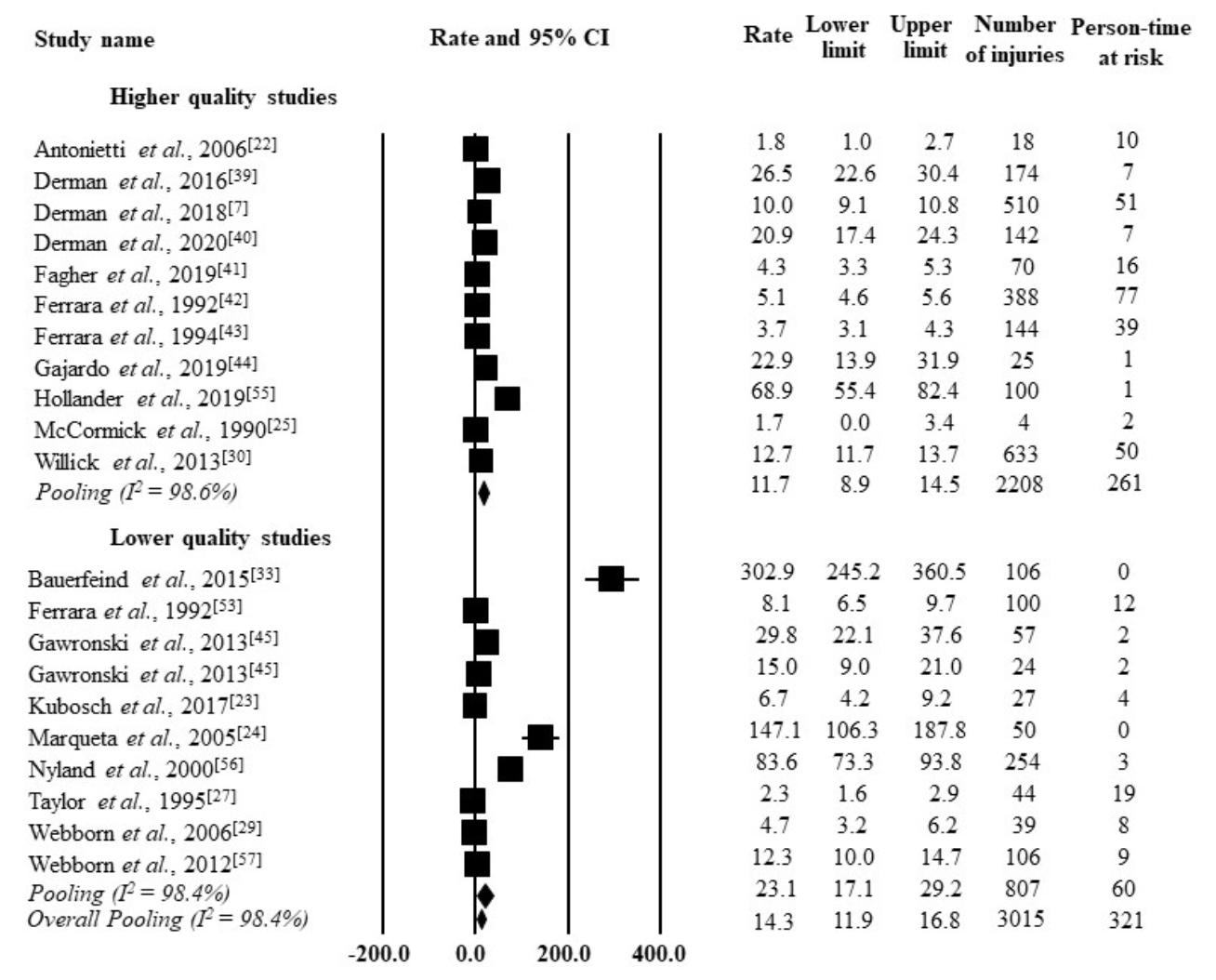We are proud that we were able to support this review on the prevalence, incidence and profile of musculoskeletal injuries in para-athletes. Sports for athletes with a disability is gaining in popularity and is growing rapidly in terms of competitiveness. Research on the protection of the health of these athletes is, however, lagging behind. With this systematic review, we provide an overview of what is known on the injuries sustained by para-athletes. At the same time, we provide future direction by calling out gaps in the evidence.
What is already known
The heterogeneity in para-sports increases the inconsistency of information about the prevalence and incidence of musculoskeletal injuries in para-athletes.
There is still a need for consensus on epidemiological research methodology, including sports injury definition in para-sports.
In para-athletes, the shoulder is the most frequently affected body location by injuries in non-ambulant para-athletes, and lower limbs injuries are the most common in ambulant para-athletes.
Methods
Searches were conducted in MEDLINE, EMBASE, AMED, SPORTSDiscus, CINAHL and hand searching. We considered studies that reported prevalence or incidence of musculoskeletal injuries in para-athletes. Study selection, data extraction and analysis followed the protocol. Meta-analyses were conducted to estimate the prevalence and incidence rate among studies and subgroup analyses investigated whether the methodological quality and sample size of the studies influenced the estimated injury prevalence and incidence. The Grading of Recommendations Assessment, Development and Evaluation system determined the strength of evidence.
Results
Forty-two studies were included. The prevalence of musculoskeletal injuries was 40.8% (95% CI 32.5% to 49.8%). Because of imprecision, indirectness and inconsistency, the strength of evidence was very low quality. The incidence of musculoskeletal injuries was 14.3 injuries per 1000 athlete-days (95% CI 11.9 to 16.8). The strength of evidence was low quality because of imprecision and indirectness. The subgroup analyses revealed that the sample size influenced on estimated injury prevalence and methodological quality influenced on estimated incidence. Injuries were more prevalent in the shoulder, for non-ambulant para-athletes, and in the lower limbs, for ambulant para-athletes.
Meta-Analysis for overall injuries incidence rate in para athletes and subgroup analysis for studies with higher and lower methodological quality
Conclusion
Para athletes show a high prevalence and incidence of musculoskeletal injuries. Current very low-quality and low-quality evidence suggests that future high-quality studies with systematic data collection, larger sample size and specificities of para athletes are likely to change estimates of injury prevalence and incidence in para athletes.
What are the new findings?
This was the first systematic review with meta-analysis on injury prevalence and incidence in para-athletes that uses Grading of Recommendations Assessment, Development and Evaluation recommendations to assess the overall quality of evidence.
The subgroup analyses revealed that the sample size influenced the estimated injury prevalence and methodological quality influenced the injury incidence rate.
Between winter sports, para-alpine skiing/snowboard had the highest incidence of injuries, while between summer sports, football 5-a-side had the highest incidence of injuries.
The full article can be accessed here (paywalled)
Pinheiro L, Ocarino J, Madaleno F, Verhagen E, Tulio de Mello M, Albuquerque M, Pereiro Andrade A, De Mata C, Pinto R, Silva A, Resende R. Prevalence and incidence of injuries in para-athletes: a systematic review with meta-analysis and GRADE recommendations. Br J Sports Med Epub ahead of print. doi:10.1136/ bjsports-2020-102823


